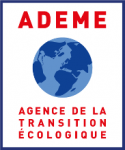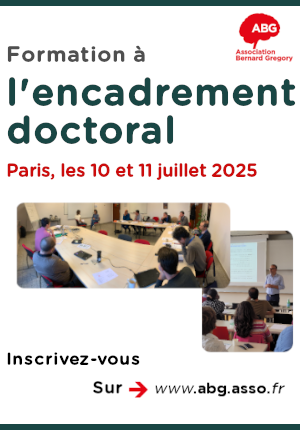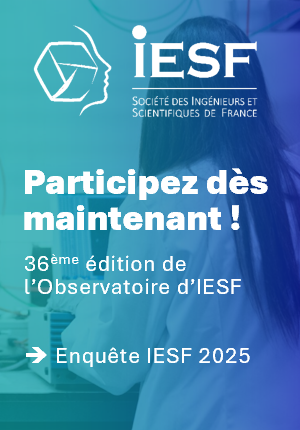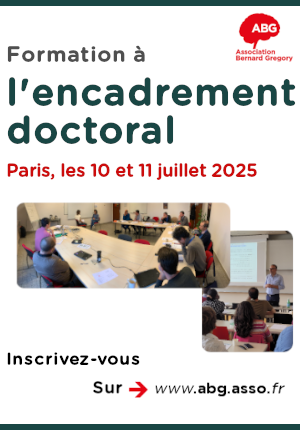Absorbeurs dynamiques piézoélectriques réglables en fréquence pour l'atténuation autonome et fiable des vibrations // Frequency-Adjustable Piezoelectric tuned mass dampers for Autonomous and Reliable Vibration Attenuations
|
ABG-131427
ADUM-65303 |
Thesis topic | |
| 2025-04-25 | Public funding alone (i.e. government, region, European, international organization research grant) |
Université de Savoie Mont-Blanc
ANNECY-LE-VIEUX - France
Absorbeurs dynamiques piézoélectriques réglables en fréquence pour l'atténuation autonome et fiable des vibrations // Frequency-Adjustable Piezoelectric tuned mass dampers for Autonomous and Reliable Vibration Attenuations
- Electronics
Absorbeurs dynamiques, piézoélectriques
Vibration absorbers, Piezoelectricity
Vibration absorbers, Piezoelectricity
Topic description
Les absorbeurs dynamiques sont des systèmes utilisés dans le but de réduire des vibrations à des sollicitations imprévisibles. Leur fréquence de résonance devant être dimensionnée avec précision, leur sensibilité aux changements de fréquence de résonance est leur problème majeur. Une des solutions consiste à utiliser un circuit électrique pour contrôler leur comportement avec des dispositifs piézoélectriques, grâce à leur couplage électromécanique k². Des interfaces électriques, appelées interfaces semi-passives (car elles ne nécessitent de l'énergie que pour la commande de transistors) semblent intéressantes pour leur capacité de réglage de la fréquence. Elles ne nécessitent pas d'alimentation électrique car l'énergie convertie en électricité par l'absorbeur est suffisante pour alimenter le circuit de contrôle. Cependant, il n'existe, dans la littérature, pas de travaux sur le dimensionnement de tels systèmes et les limites théoriques ne sont pas définies. Par ailleurs, aucune preuve de concept n'a été proposée afin d'identifier les verrous technologiques de cette solution. La thèse vise à concevoir des absorbeurs piézoélectriques avec un fort couplage k² afin d'offrir de grandes capacités d'atténuation et de réglage de fréquence. Le doctorat se concentrera sur leur conception mécanique, notamment en considérant des dispositifs flextenseurs. Une étude sur l'accord de fréquence des absorbeurs par le biais d'interfaces électriques auto-alimentées sera proposée en tenant compte de la modélisation électromécanique, de la conception mécanique et de la conception électrique.
------------------------------------------------------------------------------------------------------------------------------------------------------------------------
------------------------------------------------------------------------------------------------------------------------------------------------------------------------
Tuned mass dampers (TMD) are systems used in several applications with the aim to reduce the response amplitude to unpredictable vibrations. As the resonant frequency of TMDs must be precisely dimensioned, one of their major issues is their sensitivity to resonant frequency shifts. A promising solution is to use an electrical circuit to control TMD behavior via a piezoelectric device. The latter offer a coupling between mechanical and electrical energies, known as electromechanical coupling k². It allows energy to be dissipated in electrical circuits, and adds flexibility to the modification of mechanical behavior. Electrical interfaces, known as semi-passive interfaces as they only require energy to control the transistors drive, are interesting for frequency tuning without needing supplementary power supply than the converted energy by the TMD. However, there is no literature on the sizing of such systems, and the theoretical limits have not been defined. Furthermore, no proof-of-concept has been proposed to identify the technological barriers to this solution. The PhD thesis aims to the design of piezoelectric TMD with strong coupling coefficient k² to offer increasing capability of vibration attenuation and frequency tuning. The research will also focus on the mechanical design of piezoelectric devices and flextensional devices will be considered. A comprehensive study on frequency tuning of piezoelectric TMD through self-powered electrical interfaces is proposed in this project with the consideration of the electromechanical modeling, mechanical design and electrical design.
------------------------------------------------------------------------------------------------------------------------------------------------------------------------
------------------------------------------------------------------------------------------------------------------------------------------------------------------------
Début de la thèse : 01/10/2025
------------------------------------------------------------------------------------------------------------------------------------------------------------------------
------------------------------------------------------------------------------------------------------------------------------------------------------------------------
Tuned mass dampers (TMD) are systems used in several applications with the aim to reduce the response amplitude to unpredictable vibrations. As the resonant frequency of TMDs must be precisely dimensioned, one of their major issues is their sensitivity to resonant frequency shifts. A promising solution is to use an electrical circuit to control TMD behavior via a piezoelectric device. The latter offer a coupling between mechanical and electrical energies, known as electromechanical coupling k². It allows energy to be dissipated in electrical circuits, and adds flexibility to the modification of mechanical behavior. Electrical interfaces, known as semi-passive interfaces as they only require energy to control the transistors drive, are interesting for frequency tuning without needing supplementary power supply than the converted energy by the TMD. However, there is no literature on the sizing of such systems, and the theoretical limits have not been defined. Furthermore, no proof-of-concept has been proposed to identify the technological barriers to this solution. The PhD thesis aims to the design of piezoelectric TMD with strong coupling coefficient k² to offer increasing capability of vibration attenuation and frequency tuning. The research will also focus on the mechanical design of piezoelectric devices and flextensional devices will be considered. A comprehensive study on frequency tuning of piezoelectric TMD through self-powered electrical interfaces is proposed in this project with the consideration of the electromechanical modeling, mechanical design and electrical design.
------------------------------------------------------------------------------------------------------------------------------------------------------------------------
------------------------------------------------------------------------------------------------------------------------------------------------------------------------
Début de la thèse : 01/10/2025
Funding category
Public funding alone (i.e. government, region, European, international organization research grant)
Funding further details
Concours pour un contrat doctoral
Presentation of host institution and host laboratory
Université de Savoie Mont-Blanc
Institution awarding doctoral degree
Université de Savoie Mont-Blanc
Graduate school
634 Sciences Ingénierie Environnement
Candidate's profile
Le ou la candidat·e recherché·e doit être diplômé·e de niveau bac+5 (Diplôme d'ingénieurs ou Master) en génie mécanique, mécatronique ou en physique appliquée. Une appétence pour la simulation par éléments finis (Ansys Workbench, Comsol ou équivalent), le calcul numérique (Matlab ou équivalent) et la conception mécanique (Solidworks ou équivalent) est fortement souhaitée. Le ou la candidat·e devra démontrer une connaissance du domaine de la recherche scientifique.
The ideal candidate should hold a Master's degree (equivalent to five years of higher education) in Mechanical Engineering, Mechatronics, or Applied Physics. A strong interest in finite element simulation (Ansys Workbench, Comsol, or equivalent), numerical computation (Matlab or equivalent), and mechanical design (Solidworks or equivalent) is highly desirable. The candidate should also demonstrate familiarity with scientific research.
The ideal candidate should hold a Master's degree (equivalent to five years of higher education) in Mechanical Engineering, Mechatronics, or Applied Physics. A strong interest in finite element simulation (Ansys Workbench, Comsol, or equivalent), numerical computation (Matlab or equivalent), and mechanical design (Solidworks or equivalent) is highly desirable. The candidate should also demonstrate familiarity with scientific research.
2025-05-31
Apply
Close
Vous avez déjà un compte ?
Nouvel utilisateur ?
More information about ABG?
Get ABG’s monthly newsletters including news, job offers, grants & fellowships and a selection of relevant events…
Discover our members
 Généthon
Généthon  Laboratoire National de Métrologie et d'Essais - LNE
Laboratoire National de Métrologie et d'Essais - LNE  TotalEnergies
TotalEnergies  PhDOOC
PhDOOC  SUEZ
SUEZ  Ifremer
Ifremer  MabDesign
MabDesign  Tecknowmetrix
Tecknowmetrix  ADEME
ADEME  ONERA - The French Aerospace Lab
ONERA - The French Aerospace Lab  Aérocentre, Pôle d'excellence régional
Aérocentre, Pôle d'excellence régional  Institut Sup'biotech de Paris
Institut Sup'biotech de Paris  Nokia Bell Labs France
Nokia Bell Labs France  MabDesign
MabDesign  Groupe AFNOR - Association française de normalisation
Groupe AFNOR - Association française de normalisation  ANRT
ANRT  CESI
CESI  ASNR - Autorité de sûreté nucléaire et de radioprotection - Siège
ASNR - Autorité de sûreté nucléaire et de radioprotection - Siège  CASDEN
CASDEN





